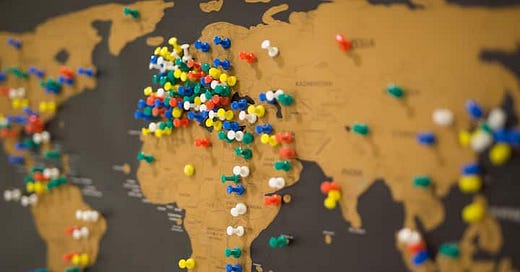How Airbnb Made Map Search Smarter
If you’ve ever used Airbnb’s map to search for a place to stay, you’ve seen it: dozens (sometimes hundreds) of little price-tag pins dotting a map, especially in popular cities like Paris or New York.
It looks like a lot of options — which should be great. But Airbnb’s engineers realized something surprising:
Too many pins can actually make it harder to book a great place.
This discovery kicked off a major change in how listings are ranked and shown on the map. But this wasn’t just a UI update — it was a deep rethinking of how search works when it moves from list mode to map mode.
Let’s walk through what they found, how they fixed it, and why this change is a brilliant example of combining UX research, behavioral data, and machine learning to improve product experience.
The Mental Shift: Search Results ≠ Map Results
In list view, ranking is simple:
The top results are shown first.
Users scroll from top to bottom.
Clicks and bookings happen in that order.
So Airbnb’s ML models learned to rank listings by likelihood of getting booked. Higher booking probability = higher ranking.
But maps are different:
There’s no "top" or "bottom” — just geography.
Pins are scattered, not sorted.
People don’t view every pin. They browse based on location and visual clustering.
So even if Airbnb's ML model said a certain listing had a 95% chance of getting booked, it could be completely ignored on the map if it sat alone or wasn’t visually noticeable.
➡️ Conclusion: Ranking needs to be rethought for spatial browsing.
Experimenting with Less = More
The team experimented with the idea of limiting the number of pins on the map.
Instead of showing every listing in the area (which could be 200+), they started showing only the top-ranked ones — say, the top 30–50 that had the highest likelihood of being booked.
Why?
Too many pins = cognitive overload.
Users often choose from a handful of options anyway.
Showing fewer, better pins nudges users toward better outcomes.
The surprise: bookings didn’t go down — they went up. People clicked on fewer pins but made faster, better decisions.
The Mini-Pin Hack
To solve the "where did all the listings go?" problem, they created a visual trick: mini-pins.
These are tiny dots (no price) representing lower-ranked listings.
They give users a sense that more options exist.
But they don’t distract from the top listings with big, bold price pins.
This is genius because it:
Maintains spatial awareness (users still feel like the map is full).
Avoids visual overload.
Nudges attention toward better listings without being forceful.
It’s classic signal vs noise filtering — visually applied.
Behind the Scenes: Machine Learning Updates
The ranking model had to evolve too. Map mode introduced unique challenges:
Users don’t interact with listings in order.
Listing location influences which ones get clicked — even if their quality is lower.
Some users zoom out/in a lot; others don’t.
Airbnb used this real-world user behavior to retrain their machine learning model, factoring in:
Geographic attention zones (heat maps of where users click on maps).
Listing visibility (was it near others or isolated?).
Conversion behavior differences between map and list users.
They created new training data based only on map interactions, leading to more accurate ranking predictions in that context.
Product Thinking: Focused, Frictionless Decision-Making
This update isn’t just about algorithms — it’s a powerful example of smart product development:
Instead of overwhelming users with all the data, they narrowed focus to the most actionable options.
They didn’t remove information — they just visually down-ranked it.
They tested iteratively, measuring user behavior at every step.
🎯 The goal? Help users find a great place faster, with less effort, and feel more satisfied with the result.
This wasn't just a “nice-to-have” feature. It produced massive real-world impact:
✅ More bookings (conversion rate went up).
⏳ Shorter time-to-book (users made decisions faster).
⭐ Higher review ratings (users were happier with the places they booked).
That’s the golden trio of product metrics: efficiency, engagement, and satisfaction — all improved by a visual and ML upgrade.
💡 Lessons You Can Steal for Your Product
Whether you’re building a hotel app, an e-commerce store, or even a game map, here are some powerful takeaways:
More options = more confusion. Sometimes less is better.
Visual hierarchy matters. Use size, color, or grouping to nudge user attention.
Ranking isn’t one-size-fits-all. Context (map vs list) changes how people interact.
Mix AI with UX. ML models are more powerful when paired with behavioral design.
Test, iterate, learn. Don’t assume — validate.
Airbnb’s map update wasn’t about flashy new tech — it was about deeply understanding how people use products and adapting the system to match that behavior.
The result? A smarter, cleaner, faster experience that users love — and that converts better too.
Not bad for a few pins on a map, right?
PARTNER WITH US
We’re now welcoming a limited number of sponsors who align with our SaaS-focused audience.
👉 Interested? Fill out this quick form to start the conversation.





